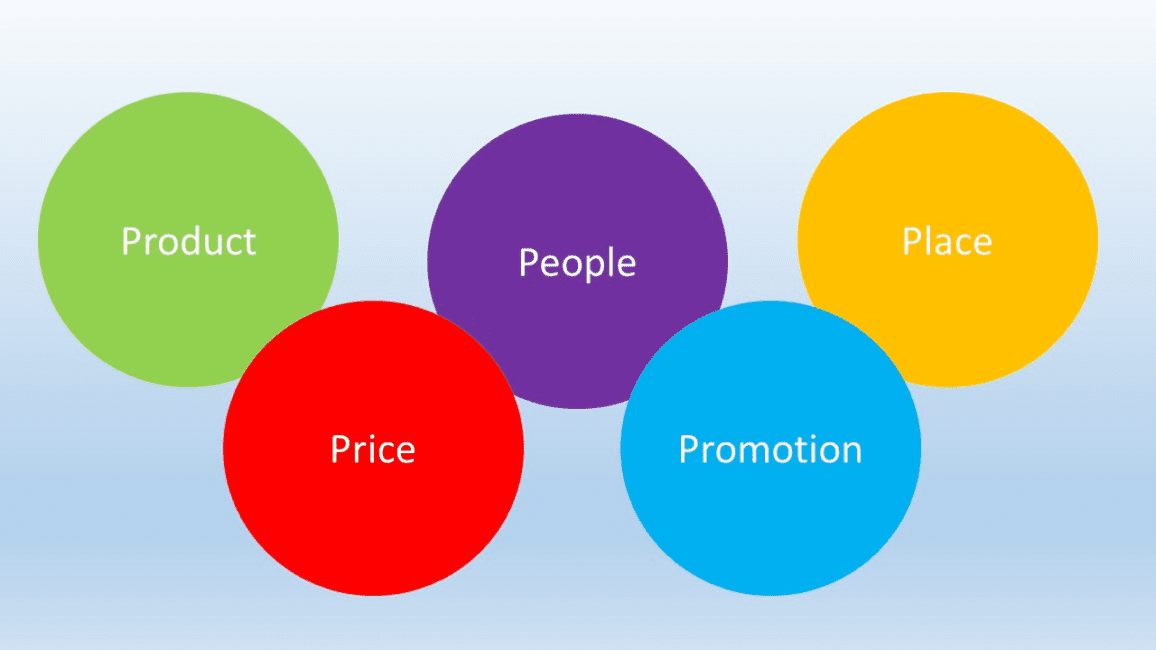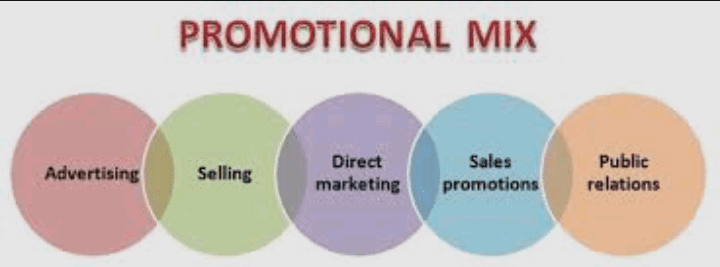In this article, we shall focus our discussion on controllable factors affecting the promotion mix and the resources of an organization to meet the challenging needs of customers on whom the organization depends.
Controllable Factors Affecting the Promotion Mix
The four main factors that are, at least partially, under the control of the marketing manager are product, price, place, and promotion.
Product, price and place influence promotion, and vice versa. The marketing manager should play a key role in determining these mixes, as is exemplified in the following discussion.
1. Product
It is good policy to concentrate promotion effort those products that have been, or might be, readily accepted by the promotion target(s) the company is working.
This is called “playing the winners” and involves the company’s placing major promotion effort on the items yielding the most sales volume and/or profit. The opposite policy, “playing the losers,” is not generally considered to be as effective.
Products that have not been, or are unlikely to be, readily accepted by promotion targets usually do not become successful because of heavy promotional emphasis.
Normally, there is a reason behind the non- acceptance of such products, and promotion tools work best when they are used to promote that are in harmony with consumer needs and wants.
Products are often classified into industrial goods (installations goods, accessory equipment, raw and processes materials, parts and subassemblies, and operating supplies) and consumer goods (convenience, shopping, and specialty goods).
Generally, personal selling is used far more in a promotion mix designed to reach industrial customers than in one aimed at customers.
Industrial buyers are usually much fewer in number, frequently concentrated geographically, and purchase larger amounts, both in quantity and in dollar amount, than consumers.
Read Also: High Paying Home-Based Business Ideas for you
Furthermore, industrial products are often technical in nature, and detailed explanations by salesmen are necessary. Industrial products may be unbranded, or brand names may be of little significance in their purchase.
Under these conditions, personal selling is the major promotion tool used, since its high per-contact cost can be justified, although publicity and advertising may appear in the industrial press.
Mass selling through advertising is often used as the major promotional thrust by producers of consumer goods.
Customers are often numerous and widely scattered. The quantity and dollar amount bought by a consumer is often too limited to justify personal- selling expenditures.
Consumer goods are normally less technical and are often bought mostly on the basis of brand names.
Personal selling is seldom necessary unless the product represents major consumer expenditure.

Discount houses have proved that many consumer goods previously thought to require personal selling can be sold on a self- service basis.
The marketing manager should be brought in at start of the development of a new product. He can bring the marketing viewpoint into a new-product conference with production, finance, and technical people.
By working with other major departments, the marketing manager can be in on new-product decisions, regarding such things as style, color, design, package, brand-name, warranties, and service.
He can furnish valuable feedback from salesmen, middlemen, market researchers, and others regarding market preferences, dealer attitudes, competitive offerings, and other information of value to a new product discussion.
2. Price
The pricing decisions a firm makes profoundly affect the promotion mix to be used on a particular product. A firm must set the basic price of a product high enough so that its sales will supply sufficient promotion dollars to make promotion feasible once the product has been introduced to the market.
Operating on too small a margin may make the use of personal selling impractical. Contrariwise, if a sufficient quantity can be sold at a high enough price, promotion dollars will be available for a wide range of efforts.
Promotion discounts from basic price are used to get middlemen to promote the product. For example, a consumer packaged-goods manufacturer might give his wholesalers 1 percent of net purchases per month to promote the product.
The wholesaler receives $1,000 for promotion if his net purchases of the manufacturer’s product for last month were $100,000. He can spend all, part, or none of this money to promote the manufacturer’s product.
However, he will be fully reimbursed by the manufacturer for whatever he spends on promoting it, up to $1,000.
Other types of discounts, such as quantity discounts or trade discounts, may be adjusted to allow middlemen enough margin to make it worthwhile for them to promote the manufacturer’s product.
Products that middlemen can price high enough to yield satisfactory profits are the ones most likely to receive promotion attention.
The marketing manager is in an admirable position to help make decisions regarding the basic price and discount structures of a product. His contacts with salesmen, wholesalers, and retailers yield information that is invaluable in price discussions.
Read Also: Bermuda Grass (Cynodon dactylon) Complete Guide
3. Place
Wholesalers and retailers are usually reached by salesmen, because they are few in number when compared to consumers, require detailed information on costs, mark-ups, profits, promotion plans, and so on, and buy in quantities large enough to make the use of personal selling feasible.
Trade advertising may be used to inform and persuade middlemen, but the major promotion tool is personal selling.
Good channel relationships with middlemen are particularly important when a manufacturer’s product is essentially similar to those of his competitors.
Salesmen can cement good relationships, serve as a valuable source of feedback to manufacturers, and quickly correct problems, all of which are areas in which mass-selling tools are weak.
The loss of an important wholesaler or retailer may be a major setback to a manufacturer’s marketing program, whereas the loss of one consumer does not usually have a drastic effect.
The marketing manager should have intimate knowledge of transportation and storage facilities and the requirements for products under his jurisdiction.
His knowledge of wholesalers and retailers and their objectives and requirements is useful in selecting proper channels of distribution, rewarding channel members, and ensuring the proper flow of goods to target markets. No one in the company has better knowledge of the factors that make up the place mix.
Read Also: Amazing Business Ideas with Little or No Start-Up Cost for Ladies

4. Promotion
Once overall company and marketing objectives have been set, the marketing manager is in a position to set promotion objectives and blend the promotion tools into a mix to achieve these objectives.
His background of experience, market research and testing, and intimate knowledge of the strengths and weakness of the promotion tools will enable him to “tailor-fit” the promotion mix to the product or service. He is also in a key position to observe and measure the effects of his selection on sales.
Read Also: Ways of Tackling Deforestation Problems
